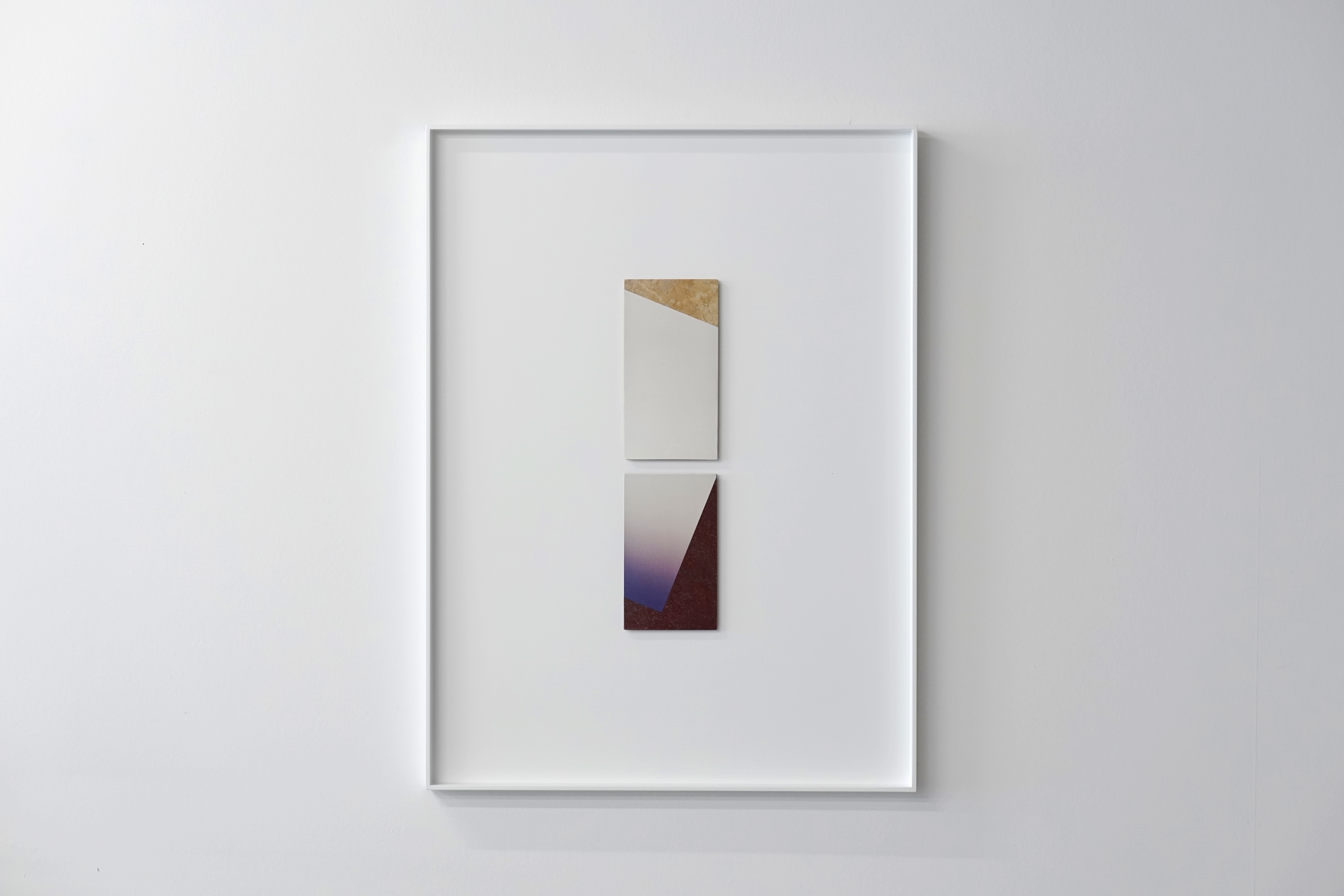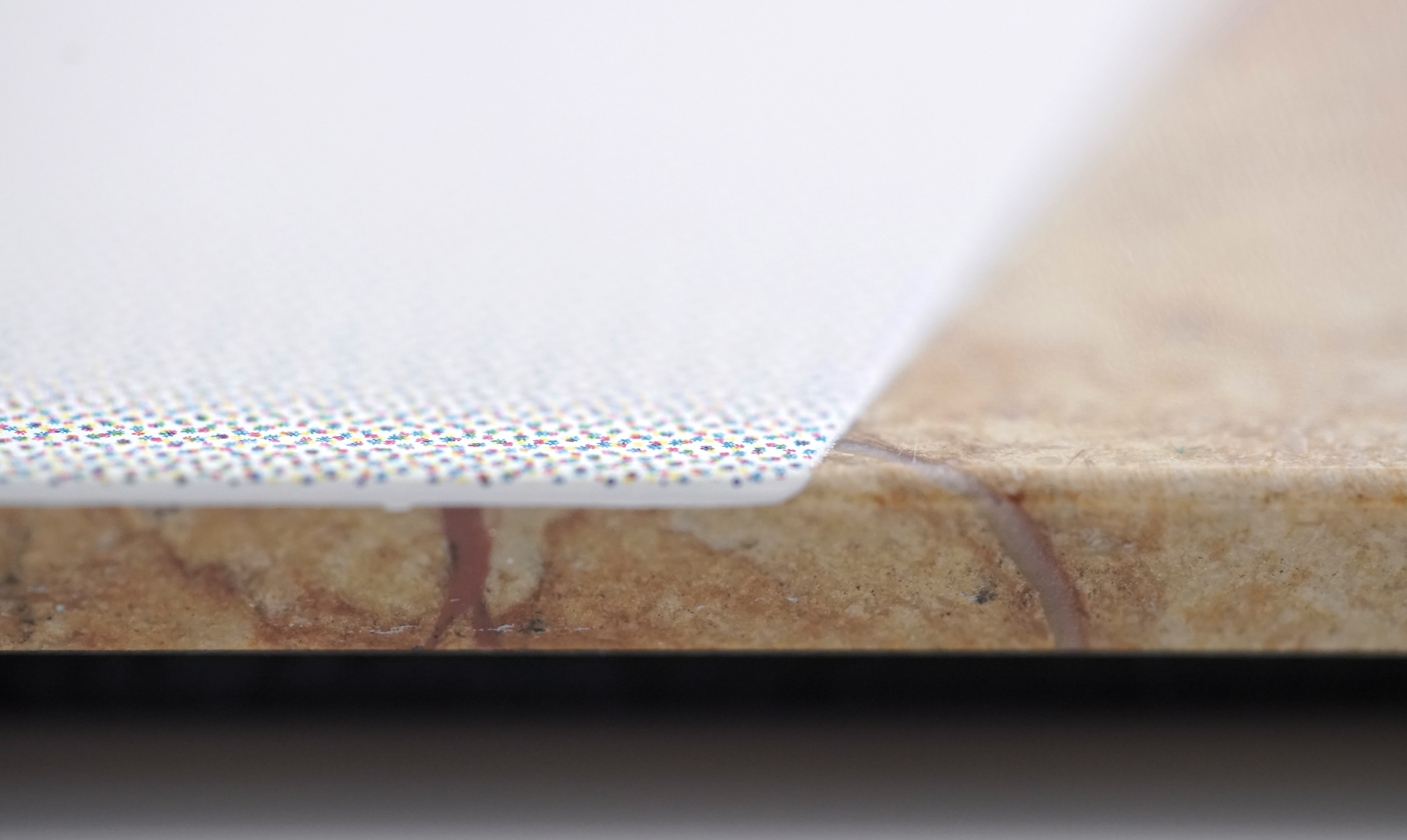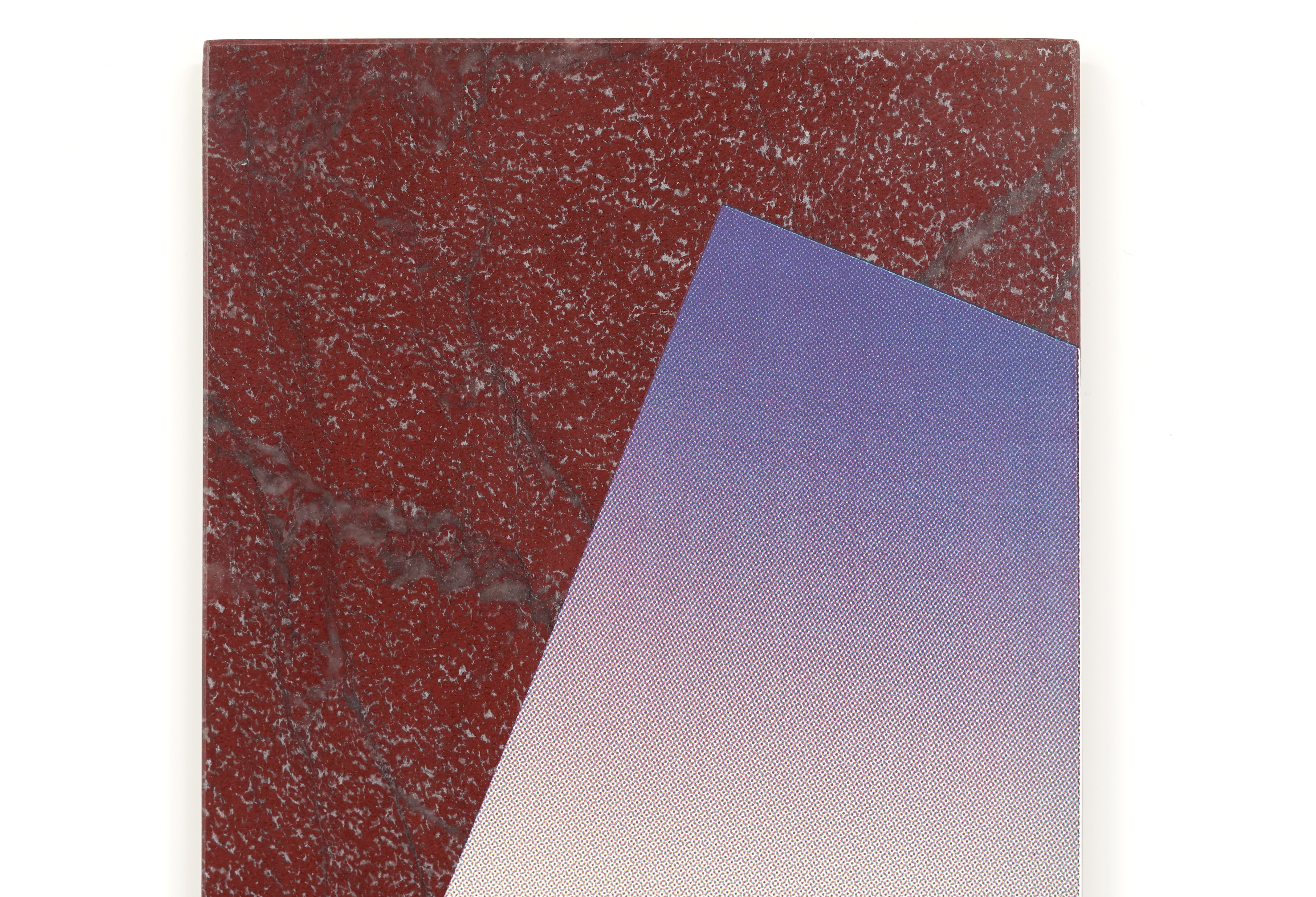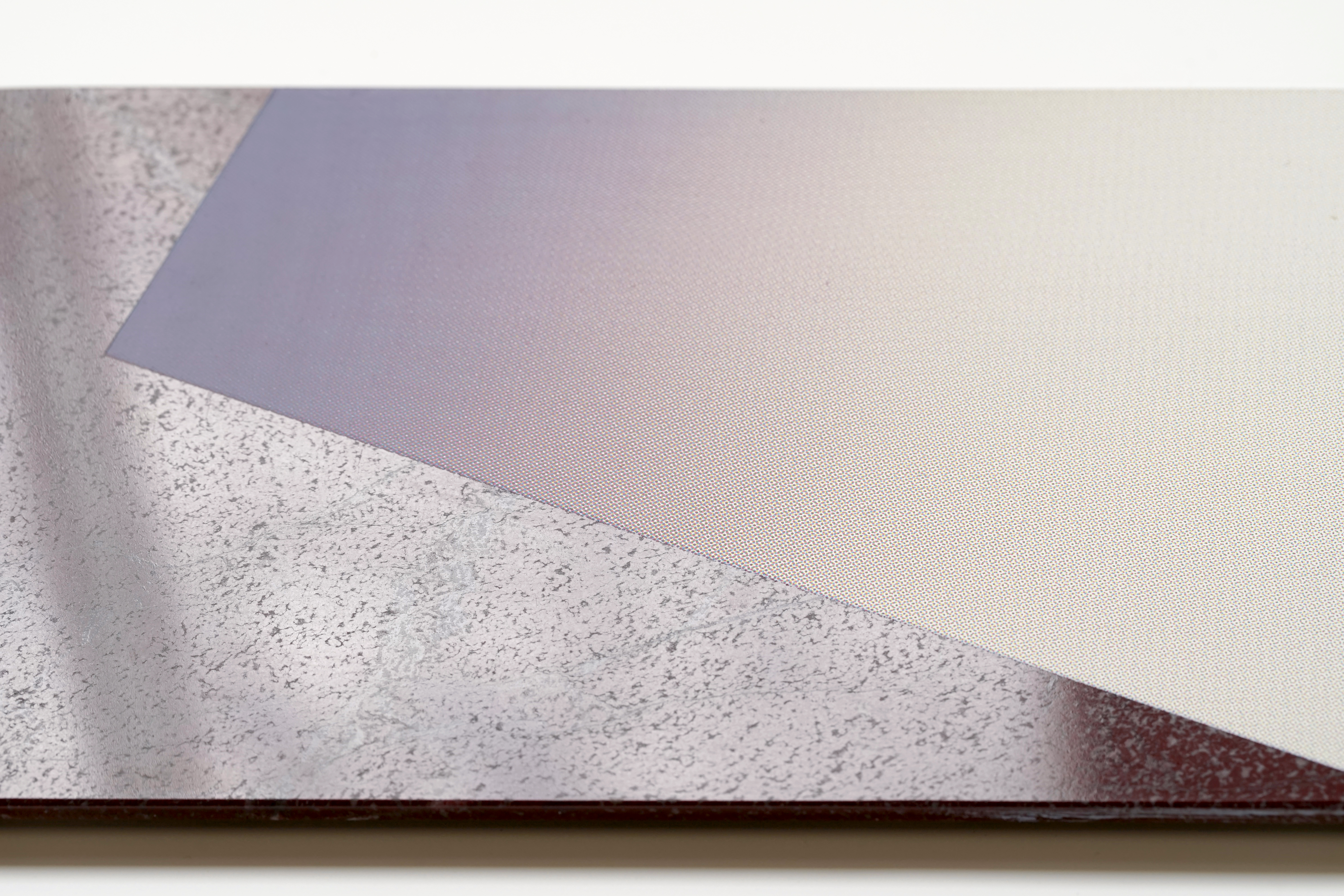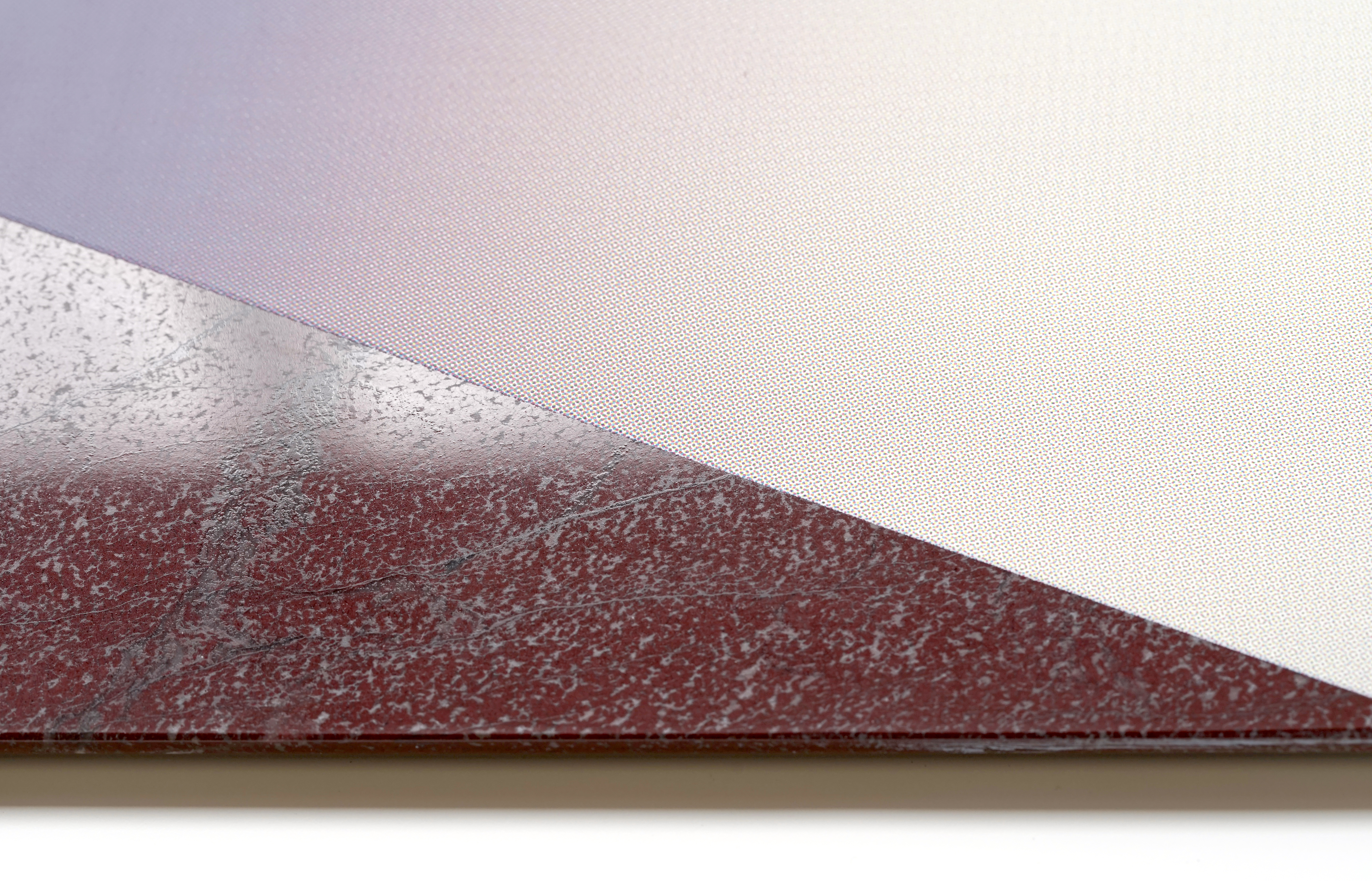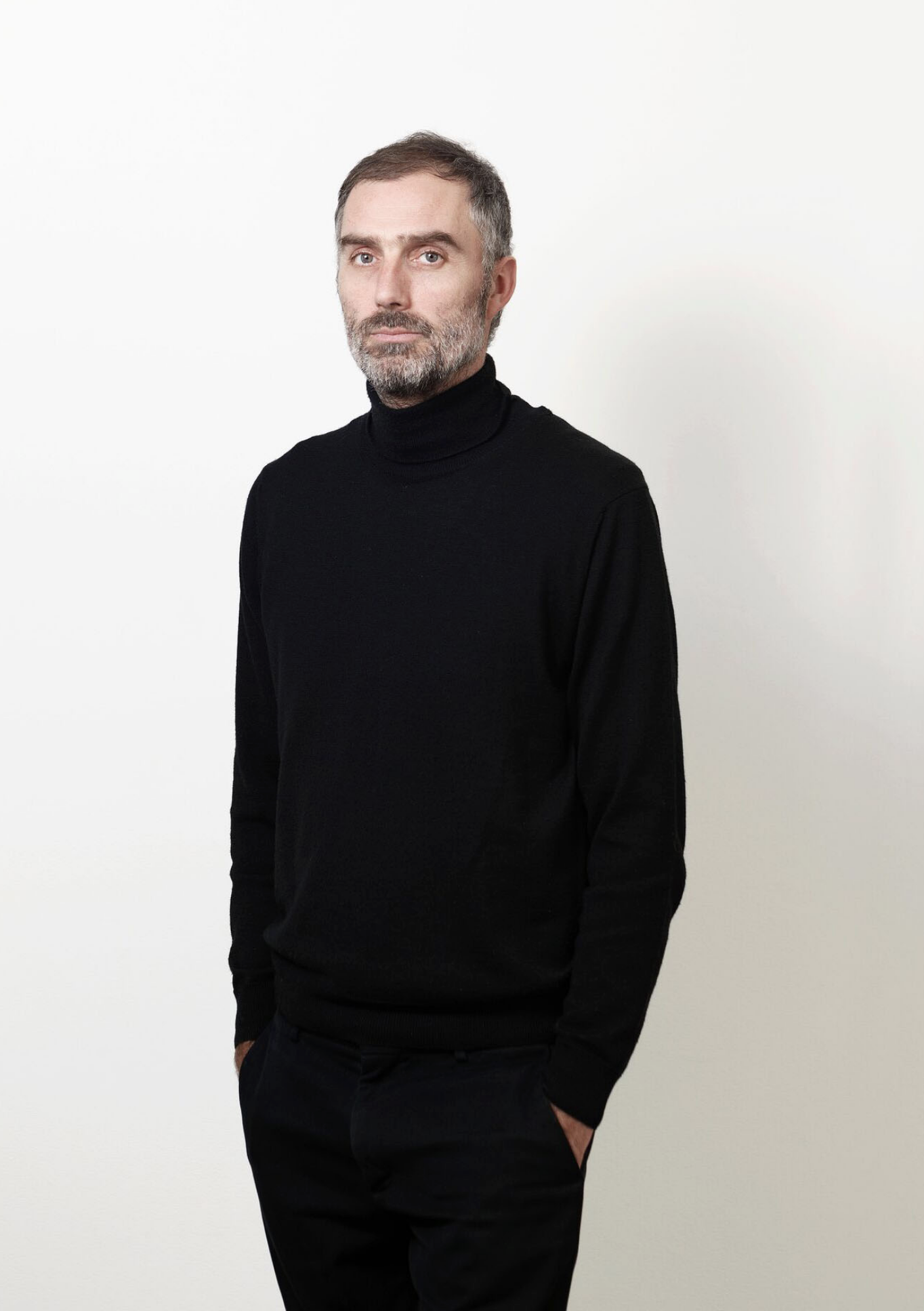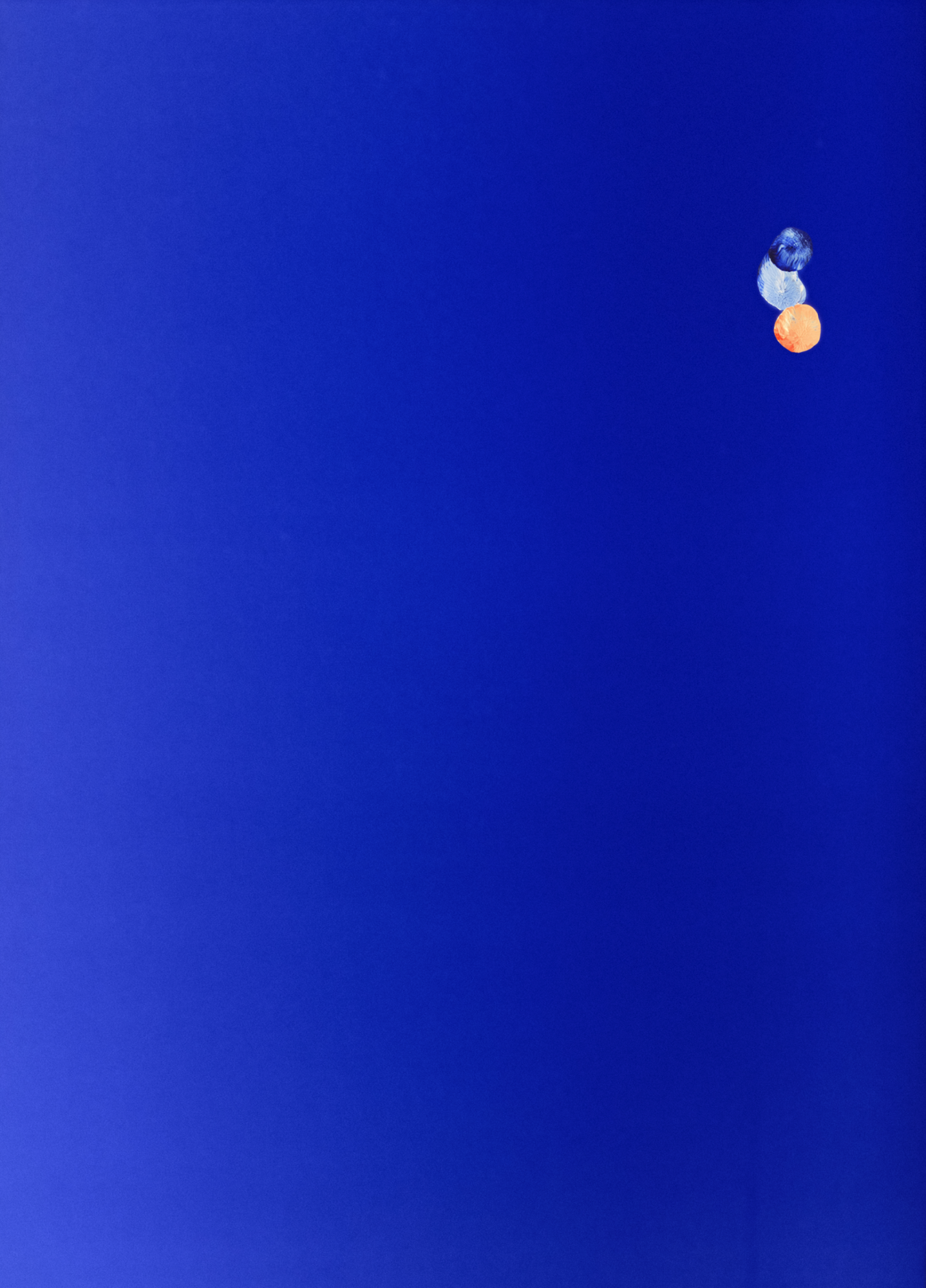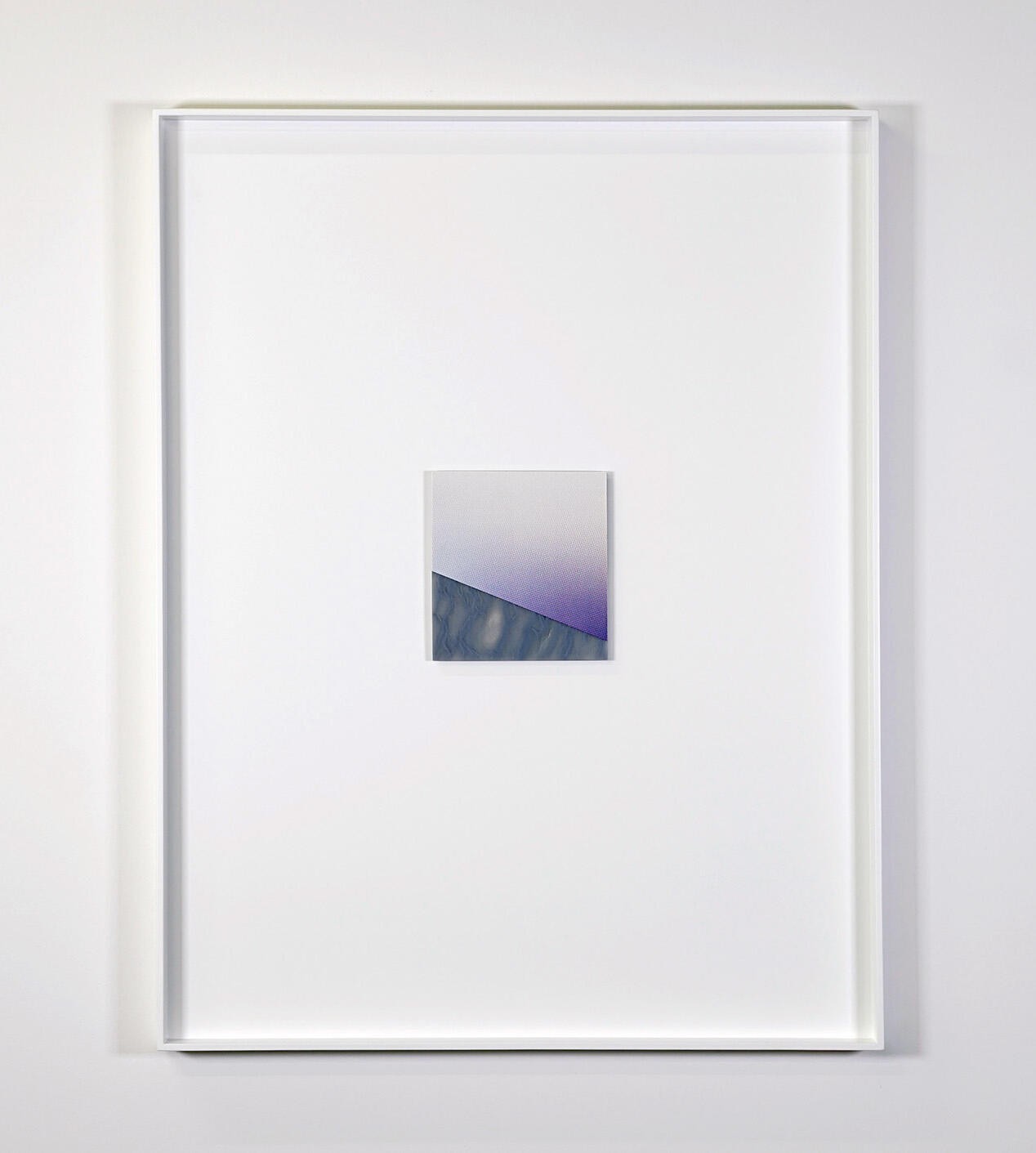Although Pieter Vermeersch has been experimenting with work on marble since 2015, it is mainly in recent years that his use of the stone has come to the foreground. His solo exhibition at Museum M (Leuven, 2019) already featured works on which the artist had applied loose, bold strips of paint or covered surfaces in perfectly executed dégradé technique. In an interview with Veerle Devos (Damn, March 2017), he said the following:
‘Stone is very primary. If you break open a boulder from the river, you can see millions of years fixed in its veins. By mining, cutting, and polishing […] we make nature more visible. The passing of time becomes palpable! And we get a glimpse of something that was not previously visible. The history of stone has an almost cosmic dimension, which I want to reactivate in my work. Marble is stone that is metamorphosed under the influence of temperature, pressure, or hydrothermal fluids; it is often millions of years old and contains fossils. Such a piece of marble is like crystallized time and space.’
In the edition Pieter Vermeersch produced for Ludion, he performs a subtle play on primary colors. He combines a yellow marble slab from the Veneto with a red marble slab from Iran that are screen-printed with a blue ink that slips towards white. The grid points are spaced to the extent of creating a quasi pointillist geometry that cuts through the timeless marble. Matter becomes image.
